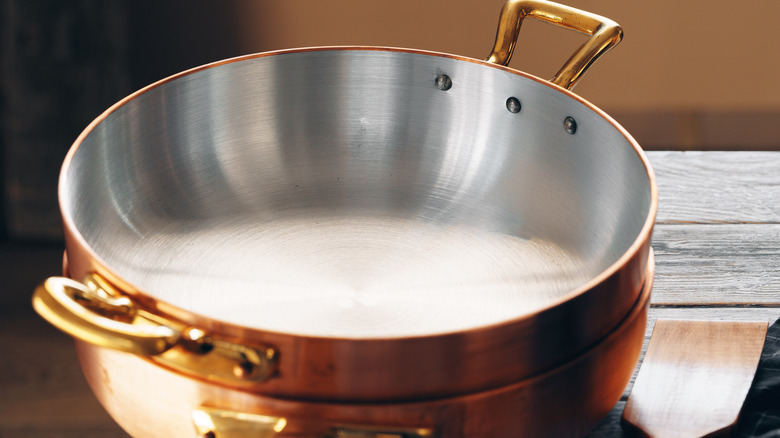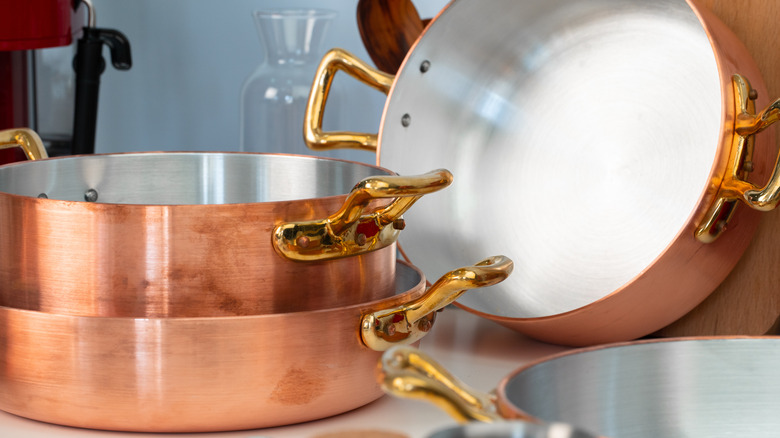The Downside Of Using A Copper Pan Lined With Stainless Steel
While combining two of the most popular durable cooking metals may seem like a no-brainer, the marriage between stainless steel and copper is less than ideal. There is no denying the benefits of cooking with stainless steel — the biggest being durability. Stainless steel is strong; pots made of it won't warp or rust, and as a result, they are straightforward to clean and maintain. And the same can be said for copper. Though decidedly more expensive, solid copper cookware has a culinary heritage dating back millennia, which is unrivaled by other metals. It is, however, a metal that is famously reactive to air, water, and acids (consider a penny or the Statue of Liberty), thus the need to line it.
Stainless steel is undoubtedly the market king, used everywhere, from professional to home kitchens. Copper cookware is seen through more or a special lens, though it has been experiencing something of a revival thanks to companies like Brooklyn Copper Cookware and House Copper. Market demands have led a good amount of copper cookware producers to offer pans lined with stainless steel alongside the traditional, tin-lined ones.
However, there are a few serious downsides to stainless steel-lined copper cookware related to molecular chemistry, thermal efficiency, and, to a lesser extent, safety.
Bonding issues
While stainless steel boasts durability, copper's talent is for conducting heat. In fact, in order for a stainless steel liner to match the thermal efficiency of copper, it would have to be thinner than a sheet of aluminum foil. However, as thin steel will very easily warp, the stainless steel lining in copper pans are typically between .50 and .75 millimeters. This additional thickness inhibits the conduction of heat, making it less efficient than a solid copper pan.
Copper and stainless steel also do not chemically bond with each other. Whereas tin will melt and form a glue-like intermetallic layer, bonding completely with the copper body, stainless steel must be fused mechanically using a process called lamination. And depending on the thickness of the stainless steel, the layer could delaminate, possibly violently, if exposed to heat for too long a period.
Again, the reason to line copper pans with stainless steel is durability, which is why many copper cookware producers go this route. Tin linings are less durable than stainless steel, as they melt at 450 degrees Fahrenheit and eventually wear off over time. However, if properly cared for and heated accordingly, there is no reason a tin-lined copper pot won't last for decades. So despite its convenience, look, and durability, a stainless steel liner does not give you the true copper cooking experience. For that, you really need to go with tin.

